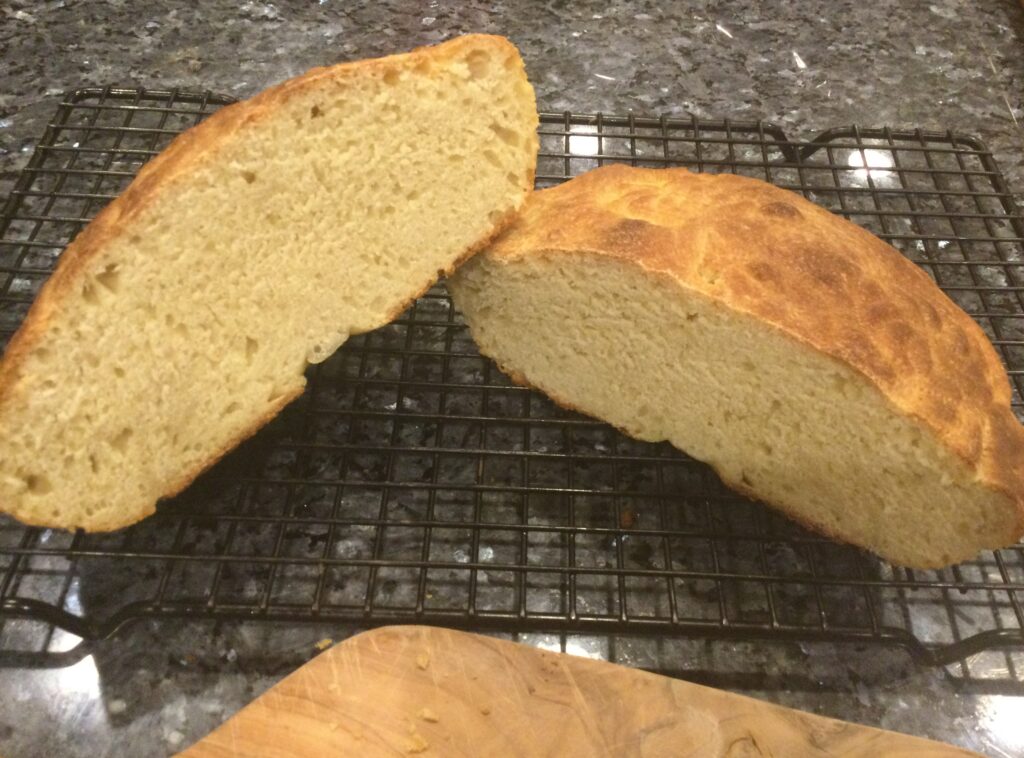
The daily bread of Morocco is a flattish loaf about 9 inches around. It is everywhere. This is my first attempt to make it based on a recipe in tasteofmaroc.com. It turned out very well although it was higher and less wide than the standard loaf in Morocco since I baked it in a ceramic pot. Next time, I will free-hand it into a circle.
The main changes I made to the recipe were to reduce the yeast and increase the time (to get a more complex flavor) and to make the loaf 50/50 bread flour and semolina.
250 g. bread flour
250 g. fine semolina
2 tsp. salt
2 tsp. sugar
1 tsp. yeast
2 Tbs. olive oil
315 g. water
In a large mixing bowl, mix together with a dough whisk the flour, semolina, and salt, and then mix in the sugar, yeast, olive oil, and water. Cover and rest for 15 minutes. With a dough hook, knead it into a smooth dough. Put in a doubling container, cover, and put in the refrigerator overnight.
The next day about noon, remove the doubling container from the refrigerator and let it rise at room temperature until doubled. Punch down and form into a 9 inch round loaf. Place the loaf on a piece of baking parchment or a silicon baking mat, cover and allow to rise for another hour. After about 30 minutes, preheat the oven to 435 degrees, including a baking steel or stone.
Dock the bread. I used an Uzbek decorative docking tool, called a chekish. At a cooking lesson at La Maison Arabe I saw this done by pocking the dough with a knife.
Bake for 20-30 minutes until done. Allow to cool before cutting.

